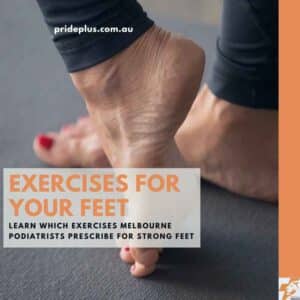Seeing a podiatrist for diabetes (updated for 2021) post and video.
As a podiatrist for diabetes sufferers for many years now there’s a few myths that we hear in clinic that need to be cleared up. As well as important knowledge that we need to share. In this post we’ll update you on what podiatrists actually do for people with diabetes and how saving limbs and saving lives are all part of the service.
What Does A Podiatrist Do For Diabetes?
At PridePlus Health we offer the greatest, most comprehensive podiatry service around. Just ask us! When it comes to diabetes and its potential effects on feet, we’re firm believers in education, independence and self management where possible.
It all starts with a Diabetes Foot Risk Assessment. Where we work out your risk level using our 🚦 system.
Let’s learn what the 🔴🟡🟢 lights mean.
When you have diabetes and attend to a PridePlus Health podiatrist for an assessment, we undertake a comprehensive check and stratify the risk level as either at Low🟢, Moderate🟡 or High 🔴 risk of complications.
Complications are things like ulceration, amputation, infections and other nasty things that can happen to our feet.
Once we know you’re risk level we’ll work with you to manage your risk level and reduce the likelihood of complications.
The simple traffic light system with green/amber/red colouring helps you stay on top of things which are relevant to you.
Our 🚦 system has been produced by our team of experienced podiatrists. It’s been adapted and iterated over the years from a very successful evidence-based program which started in the NHS in the UK.
So, what tests are used to determine my foot risk?
Arterial Perfusion Testing
Big words which mean circulation testing!
For many people, arterial disease is a considerable burden on daily life. With risk factors such as smoking, diabetes and obesity/sedentary lifestyle all linked with arterial disease, it’s no surprise we see it commonly in clinic.
For years, podiatrists have been involved in arterial perfusion testing with clinical tests such as capillary refill, palpation of pedal pulses and clinical signs/symptoms of arterial disease. In the past, a good podiatrist with time on their side will complete an ankle brachial index using an audible doppler, a sound clinical measure of arterial perfusion, but it can be unreliable in those with longstanding diabetes due to calcification of arteries.
At PridePlus Health, we use the latest technology to undertake Absolute Toe Pressures as a component in our vascular assessment. This test involves using a PPG probe, smart doppler and the smallest sphyg cuff available to measure the absolute pressure of a digit. We can then interpret that data as follows:
Absolute Toe Pressure Results
- More than 80mmHg = Normal arterial perfusion (Good Circulation)
- Between 30mmHg and 80 mmHg = Reduced arterial perfusion (OK circulation)
- Less than 30mmHg = Critical ischaemia, inability to heal (Really poor circulation)
Another handy tool is to combine this reading with a brachial systolic measure to give a TBI (toe brachial index). This has the advantage over an ABI (ankle brachial index) as it is unlikely to have an error due to calcification (digital vessels rarely calcify) as well as being simpler/faster to conduct for the patient and podiatrist.
If you’re coming to us at PridePlus Health with arterial risk factors you will be offered thorough arterial testing.
Sensation
The ability to feel what is going on with our feet can be impacted with diabetes which can lead to all number of problems. The most obvious is if we cannot feel our feet, we don’t know if something is going wrong (the gift of pain!).
Other changes to sensation and nerves can increase the risk of falls as our feet can change shape, lose their proprioception (a big topic for a separate post – basically our feet can lose the ability to know if they’re going to walk over a step, or into the step and trip us up).
We test sensation by completing a variation of the following:
- Using a 10g monofilament
- Using a tuning fork
- Testing reflexes (plantar strike and achilles)
- Completing the Ipswich Touch Test
- And digit movement/discrimination for proprioception
These results combined with other clinical indicators will tell us if there’s any nerve changes and guide what we need to do next.
What Next?
We combine the results of your arterial testing, your nerve testing, a thorough history, your ability to manage and positively influence your own changing foot care needs and a few other factors to work out if you are:
Next we personalise your management and treatment plan to ensure we avoid any diabetes related pedal complications. This can include all sorts of changes. It might be exercises, footwear changes, socks, hosiery and orthotics. It might be changing how you manage your own skin care, your hygiene. Often it includes something called podiatry primary care, or even a medical pedicure.
Let’s learn a little more about that now.
Why See A Podiatrist For Diabetes Toenail and Skin Care
Podiatrists are able to assess, manage and treat almost any lower limb complication. Some of the more common presenting complaints we see are those grouped as “primary care” where the podiatrist attends to nail and skin pathologies that the patient no longer can, or never could address.
Gentle and professional care is a core skill of all PridePlus Health podiatrists.
One of the areas where our podiatrists do more than what podiatry was previously known for as a profession, is our education and prevention.
For those suffering with painful corns or callus, we take the time to explain the pathophysiology of the lesions, and, if you can/want to address their recurrence, how an you might go about it.
To do this, we utilise our skills in footwear assessment, biomechanics and gait analysis to isolate the cause of lesion development. From here we can implement changes and get positive results.
If you have diabetes and unsure of your risk level book in with our podiatry team today.
Why Seeing A Podiatrist For Diabetes Should Involve Exercise
Back in the dim dark days of podiatry we didn’t really talk about the E word, exercise all that often. Exercise was one of those things we knew was important but was not within the regular scope of podiatry practice.
Thankfully that has well and truly changed!
Podiatrists in 2021 and beyond are experts in the foot and ankle. Treating injuries, pains, and conditions with evidence based therapies. And there’s no treatment more evidence based than exercise.
3 Benefits of Exercise For Feet with Diabetes
- Resistance exercise increases circulation, muscle mass and improves blood sugar management.
- Exercise will treat pain and rehabilitate soft tissues that are at greater risk of injury if you have diabetes.
- Exercise leads to increased energy and helps mental health.
Reading those benefits back there’s definitely many more than 3 positive reasons to exercise. As podiatrists it’s our role and responsibilities to encourage and foster the right kind of exercise behaviours for your needs.
Many of us work closely with the exercise experts (exercise physiologists) to get truly life changing results.
Diabetes Foot Myths
Now let’s clear up a few myths relating to diabetes and feet. These myths and advice are all general in nature and don’t apply to one specific person or case.
Myth 1: Cold feet means poor circulation.
Like so many myths there is an element of truth to this. If you have very poor circulation which means an absolute toe pressure of under 30mmHg having cold feet is likely. But not always the case.
Conversely, if you have cold feet you may have excellent circulation.
So there’s a link, but it’s not direct one way or the other. The best outcome is to get your absolute toe pressure tested by your podiatrist.
Myth 2: It must be gangrene!
There’s plenty of fear around gangrene, infections and amputation with diabetes. Being fearful of these is very reasonable too, they are not trivial concerns.
But, it’s worth thinking about what gangrene is. A bacterial infection affecting dead tissue. Yeah, that’s pretty gross but to have this you’ll need to have really poor circulation plus infection. You will already know your circulation levels from previous testing so if your circulation is good gangrene is highly unlikely. But not impossible.
Myth 3: There’s nothing I can do about my diabetes, my feet are stuffed.
In the past people were labelled as “diabetics”. All of a sudden we’re reduced to a new noun. No longer a person, now a living embodiment of a disease. Thankfully most of us have snapped out of that behaviour.
You’re not a diabetic (unless this is a label you choose for yourself and champion), you’re still you! Having diabetes is a manageable, treatable condition.
This is where podiatrists play an important role. Being active is so important to treat your diabetes, and it’s hard to be active on injured or sore feet.
Podiatrists can treat foot pain from all different causes. We also play a part in fostering a positive relationship with exercise. Being a vocal supporter of diabetes programs like Sugar Burners 🔥 is key to podiatry treatments.
More Resources
Our podiatry team has created a free online diabetic foot test you can complete to determine your foot risk level. You will need to know what your circulation and sensation is like to complete.
About The Author

Tim Mulholland is a podiatrist passionate about living your best life on your feet. Understanding our own needs and providing care, support and encouragement for each of us to love our feet for the lives they allow us to live. When not consulting as a podiatrist, mentoring clinicians or teaching at La Trobe University you’ll find Tim running, pedalling and having a laugh with friends around Melbourne.




